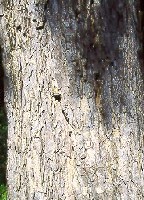View crop
View crop Data sheet EcoPortPithecellobium dulce
 |
|
| Notes |
|---|
| BRIEF DESCRIPTION A small to medium-sized semi-evergreen shrub or tree reaching 5-20 m in height, with a short trunk 30-100 cm in diameter. The tree is broadly crowned and the trunk is often crooked or has low branches. USES The wood can be used as fuel but smokes considerably, it is also used for general construction, paneling, boxes and posts. The tree is planted for shade, shelter, thorny hedges and as an ornamental. The aril are eaten fresh or used for beverages. An oil is extracted from the seeds and used for food or in soaps. Seed resedue is rich in protein and can be used as stockfeed. Pods and leaves can be used as forage and the plant withstands heavy browsing. Tannin and gum can be extracted from the bark and it also have medicinal properties. The flowers is a source of quality honey. It is mentioned as a possible agroforestry species. GROWING PERIOD Perennial. It can tolerate droughts of up to 8 months. COMMON NAMES Kamachile, Camonsil, Quamachil, Guamachil, Guayamochil, Sweet inga, Manila tamarind, Madras thorn, Blackbread, Bread and cheese tree, Opiuma, Inga dulce, Guamuchil, Guamuche, Mchongoma, Vilayati, Imli, Dakhani babul, Katugaha, Kodukapuli, Makam tet, Kinki-ju, Opiuma, Jaguay, Monghollano, Mochiguiste, Chiminango, Payande, Yacure, Tierra espina, Babul, Makam tet, Chamultis, Damulkis, Kamachilis, Kamanchili, Kamansile, Kamarsilis, Kamatsele, Kamonsiles, Kamanchilis, Kamantilis, Karamansili, Komonsili, Kamunsil, Komontos, Komontres, Damortis, Komontres, Asam belanda, Asam londo, Asam koranji, Asam kranji, Asam tjina, Damortis, Kway-tanyeng, Am'pul tuk, Khaam th'eed, Mak-ham-thet, Makham-khong, Me keo, Keo tay. FURTHER INF Scientific synonym: Mimosa dulcis. Kamachile is native of the region between southern California and Columbia and Venezuela. It is found at elevations between sea level and 1800 m. It is common along watercourses and roadsides, in dry thickets or forests in coastal areas, on plains and hillsides. The tree fixes nitrogen. It may spread aggressively, but it is not very windfirm. Its sap may irritate the skin. | Sources |
| Grassland Index Little E 1983 pp 219-221 [USE, RAIN, TEXT, DRA] Hensleigh T 1988 pp 266-269 [LIG, TEXT, FER, DRA, TEMP, RAIN, LIMITS, USE] Troup R 1921 pp 485 [TEXT, USE, LIG, KTMP] Verheij E 1991 pp 256-257 [USE, LIG, DRA, TEXT] |